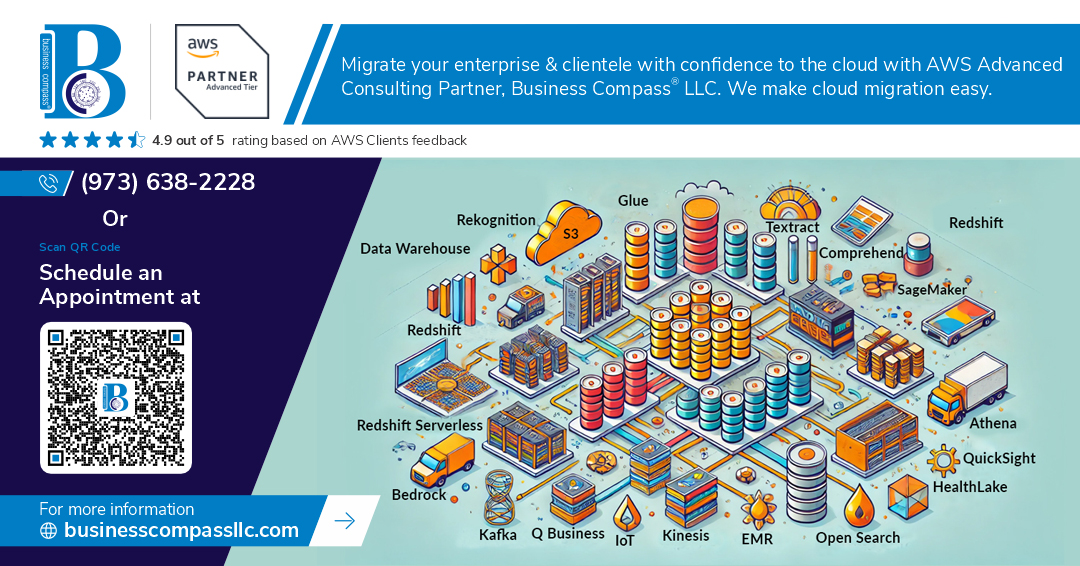Are you drowning in a sea of data? 🌊 In today’s digital age, businesses are inundated with information from countless sources. But here’s the million-dollar question: How can you transform this overwhelming flood of data into valuable insights that drive your business forward?
Enter the data warehouse – your lifeline in the turbulent waters of big data. A well-designed data warehouse isn’t just a storage solution; it’s a powerful tool that can revolutionize your decision-making process, streamline operations, and unlock hidden opportunities. But building one isn’t as simple as flipping a switch. It requires careful planning, strategic design, and expert implementation.
In this comprehensive guide, we’ll navigate the intricate process of building a data warehouse from the ground up. We’ll explore everything from understanding the fundamentals to maintaining and evolving your system. Whether you’re a data novice or a seasoned professional, this post will equip you with the knowledge to turn your data chaos into a well-oiled machine. So, are you ready to embark on this data-driven journey? Let’s dive in! 🚀
Understanding Data Warehousing Fundamentals
Defining data warehouses and their purpose
A data warehouse is a centralized repository that stores large volumes of structured data from various sources within an organization. Its primary purpose is to support business intelligence activities, decision-making processes, and data analysis. Unlike operational databases, data warehouses are optimized for querying and analyzing historical data.
Key components of a data warehouse
A well-designed data warehouse consists of several key components:
- Data sources
- ETL processes
- Data storage
- Metadata repository
- Query and analysis tools
| Component | Description |
|---|---|
| Data sources | Internal and external systems that provide data |
| ETL processes | Extract, Transform, and Load data into the warehouse |
| Data storage | Physical storage of cleaned and integrated data |
| Metadata repository | Information about the data warehouse structure and content |
| Query and analysis tools | Software for accessing and analyzing warehouse data |
Benefits of implementing a data warehouse
Implementing a data warehouse offers numerous advantages for organizations:
- Improved decision-making
- Enhanced data quality and consistency
- Historical data analysis
- Increased operational efficiency
- Better customer insights
- Competitive advantage
By centralizing data from various sources, a data warehouse provides a single source of truth for the entire organization. This enables more accurate and timely decision-making based on comprehensive, historical data. As we move forward, we’ll explore the crucial steps involved in planning your data warehouse project to ensure its success.
Planning Your Data Warehouse Project
Assessing business requirements and goals
Before diving into the technical aspects of building a data warehouse, it’s crucial to understand the specific needs of your organization. Start by conducting thorough interviews with stakeholders from various departments to identify their data requirements and business objectives. Create a prioritized list of these requirements, focusing on:
- Key performance indicators (KPIs)
- Reporting needs
- Data analysis goals
- Compliance and regulatory requirements
| Stakeholder | Primary Requirement | Secondary Requirement |
|---|---|---|
| Finance | Revenue forecasting | Expense tracking |
| Marketing | Campaign ROI | Customer segmentation |
| Operations | Inventory management | Supply chain optimization |
| Sales | Sales pipeline | Customer lifetime value |
Identifying data sources and types
Once you’ve established your business requirements, the next step is to identify the relevant data sources and types. This process involves:
- Cataloging existing internal databases
- Identifying external data sources
- Determining data formats (structured, semi-structured, unstructured)
- Assessing data quality and completeness
Choosing the right architecture
Selecting the appropriate data warehouse architecture is crucial for long-term success. Consider factors such as scalability, flexibility, and query performance when choosing between:
- Star schema
- Snowflake schema
- Galaxy schema
Each architecture has its pros and cons, so align your choice with your specific business needs and data complexity.
Selecting appropriate tools and technologies
The final step in planning your data warehouse project is choosing the right tools and technologies. Consider factors such as:
- Scalability requirements
- Budget constraints
- In-house expertise
- Integration capabilities with existing systems
Popular options include cloud-based solutions like Amazon Redshift, Google BigQuery, and on-premises solutions like Oracle or Microsoft SQL Server. Evaluate each option based on your specific needs and long-term goals.
Designing the Data Warehouse Structure
Creating a logical data model
A logical data model is the foundation of your data warehouse structure. It defines the relationships between different data elements and provides a high-level view of your organization’s data.
Key components of a logical data model:
- Entities: Represent business objects or concepts
- Attributes: Describe the properties of entities
- Relationships: Show how entities are connected
To create an effective logical data model:
- Identify key business entities
- Define attributes for each entity
- Establish relationships between entities
- Normalize the data structure
| Entity Type | Example Entities |
|---|---|
| Fact | Sales, Orders |
| Dimension | Customer, Product |
Developing a physical data model
Once the logical model is complete, translate it into a physical data model that reflects the actual database structure. This step involves:
- Choosing appropriate data types
- Defining primary and foreign keys
- Optimizing for performance
Establishing data hierarchies and relationships
Data hierarchies help organize information in a meaningful way, enabling efficient analysis and reporting. Consider:
- Parent-child relationships
- Many-to-many relationships
- Slowly changing dimensions
Implementing dimensional modeling techniques
Dimensional modeling is crucial for creating a user-friendly and performant data warehouse. Key techniques include:
- Star schema: Central fact table surrounded by dimension tables
- Snowflake schema: Extended star schema with normalized dimensions
- Conformed dimensions: Shared dimensions across multiple fact tables
These techniques ensure that your data warehouse structure supports efficient querying and analysis, paving the way for effective business intelligence integration.
Extracting, Transforming, and Loading (ETL) Data
Setting up data extraction processes
Data extraction is the first crucial step in the ETL process. To set up efficient data extraction processes:
- Identify data sources
- Choose extraction methods
- Schedule extraction jobs
- Monitor and log extraction activities
Let’s compare common extraction methods:
| Method | Pros | Cons |
|---|---|---|
| Full extraction | Simple, comprehensive | Time-consuming, resource-intensive |
| Incremental extraction | Efficient, less resource-intensive | More complex setup, potential data inconsistencies |
| Change Data Capture (CDC) | Real-time updates, minimal impact on source systems | Requires specialized tools, complex implementation |
Designing data transformation rules
Transformation rules ensure data consistency and compatibility with the target data warehouse structure. Key aspects include:
- Data cleansing and standardization
- Data type conversions
- Aggregations and calculations
- Merging data from multiple sources
Implementing data cleansing and quality checks
Data quality is paramount for a successful data warehouse. Implement these checks:
- Completeness: Ensure all required fields are populated
- Accuracy: Validate data against known values or ranges
- Consistency: Check for conflicting information across sources
- Uniqueness: Identify and handle duplicate records
Optimizing data loading procedures
Efficient data loading is crucial for timely data availability. Consider these optimization techniques:
- Parallel loading
- Bulk inserts
- Partitioning and indexing strategies
- Staging tables for intermediate storage
By implementing these ETL best practices, you’ll ensure a robust foundation for your data warehouse, enabling smooth data integration and reliable business intelligence insights.
Implementing Security and Access Controls
Establishing user roles and permissions
When implementing security in your data warehouse, establishing user roles and permissions is crucial. This process involves defining different levels of access based on job responsibilities and data sensitivity. Here’s a table outlining common user roles and their typical permissions:
| Role | Description | Permissions |
|---|---|---|
| Admin | System administrators | Full access to all data and system settings |
| Analyst | Data analysts and scientists | Read access to most data, ability to create reports |
| Manager | Department heads | Read access to department-specific data, limited write access |
| Viewer | General staff | Read-only access to specific, non-sensitive data |
Encrypting sensitive data
Encryption is a vital component of data warehouse security. It involves converting data into a coded format that can only be deciphered with the correct encryption key. Best practices include:
- Encrypting data at rest and in transit
- Using strong encryption algorithms (e.g., AES-256)
- Implementing proper key management procedures
Implementing data masking techniques
Data masking helps protect sensitive information by replacing it with fictitious but realistic data. This allows for testing and development without exposing actual sensitive data. Common data masking techniques include:
- Substitution
- Shuffling
- Number and date variance
- Encryption
Setting up audit trails and monitoring
Audit trails and monitoring are essential for maintaining security and compliance. They help track user activities, detect unauthorized access attempts, and ensure data integrity. Key aspects include:
- Logging all data access and modifications
- Monitoring system performance and security events
- Regularly reviewing audit logs for anomalies
- Setting up alerts for suspicious activities
With these security measures in place, your data warehouse will be better protected against potential threats and unauthorized access. Next, we’ll explore how to optimize the performance and scalability of your data warehouse to ensure it can handle growing data volumes and user demands efficiently.
Optimizing Performance and Scalability
Indexing strategies for faster queries
Optimizing query performance is crucial for an efficient data warehouse. Implementing effective indexing strategies can significantly reduce query execution time. Consider the following approaches:
- Bitmap indexes: Ideal for columns with low cardinality
- B-tree indexes: Suitable for high-cardinality columns
- Clustered indexes: Organize table data based on the index
- Covering indexes: Include all columns required by a query
| Index Type | Best Use Case | Pros | Cons |
|---|---|---|---|
| Bitmap | Low cardinality | Fast for large datasets | High maintenance overhead |
| B-tree | High cardinality | Balanced performance | Larger storage requirement |
| Clustered | Frequently queried columns | Faster data retrieval | Only one per table |
| Covering | Specific queries | Eliminates table lookups | Increased storage and maintenance |
Partitioning large tables for improved performance
Partitioning divides large tables into smaller, more manageable segments, enhancing query performance and data management. Key partitioning strategies include:
- Range partitioning: Based on value ranges (e.g., date ranges)
- List partitioning: Using predefined lists of values
- Hash partitioning: Distributing data evenly across partitions
Implementing caching mechanisms
Caching can dramatically improve query response times by storing frequently accessed data in memory. Consider implementing:
- Result set caching: Store query results for reuse
- In-memory caching: Keep hot data in RAM for faster access
- Distributed caching: Spread cached data across multiple nodes
Leveraging parallel processing capabilities
Parallel processing can significantly boost performance by distributing workloads across multiple CPUs or nodes. Implement:
- Parallel query execution: Break complex queries into smaller, concurrent operations
- Distributed processing: Utilize multiple servers to process data simultaneously
- MPP (Massively Parallel Processing) systems: Scale out horizontally for improved performance
By applying these optimization techniques, you can ensure your data warehouse remains performant and scalable as your data volume and complexity grow. Next, we’ll explore how to integrate business intelligence tools to maximize the value of your optimized data warehouse.
Integrating Business Intelligence Tools
Connecting reporting and analytics tools
To leverage the full potential of your data warehouse, it’s crucial to integrate robust reporting and analytics tools. These tools allow users to extract valuable insights from the vast amounts of data stored in your warehouse. Here’s a comparison of popular reporting and analytics tools:
| Tool | Primary Use Case | Key Features | Integration Complexity |
|---|---|---|---|
| Tableau | Data visualization | Interactive dashboards, real-time analytics | Medium |
| Power BI | Business analytics | AI-powered insights, natural language Q&A | Low |
| Looker | Data exploration | LookML modeling language, embedded analytics | High |
| QlikView | Self-service BI | Associative data model, in-memory processing | Medium |
When connecting these tools to your data warehouse, consider:
- Data connectivity options (ODBC, JDBC, native connectors)
- Security and authentication mechanisms
- Performance impact on the data warehouse
- Scalability for concurrent users
Creating data marts for specific departments
Data marts are subset databases derived from the main data warehouse, tailored for specific business units or functions. Benefits of implementing data marts include:
- Improved query performance
- Customized data views for different departments
- Enhanced data security and access control
- Reduced complexity for end-users
Steps to create effective data marts:
- Identify department-specific data needs
- Design the data mart schema (star or snowflake)
- Extract relevant data from the main warehouse
- Transform and aggregate data as needed
- Load data into the mart structure
- Implement security measures and access controls
Implementing OLAP cubes for multidimensional analysis
OLAP (Online Analytical Processing) cubes enable complex analytical queries with rapid execution times. They pre-aggregate data along multiple dimensions, allowing users to slice and dice information efficiently.
Key considerations for OLAP cube implementation:
- Choose appropriate dimensions and measures
- Determine granularity levels for each dimension
- Plan for regular cube refreshes to maintain data currency
- Optimize cube design for common query patterns
Setting up data visualization dashboards
Data visualization dashboards provide an intuitive interface for users to interact with warehouse data. When setting up dashboards:
- Identify key performance indicators (KPIs) for each department
- Design user-friendly layouts with clear data hierarchies
- Incorporate interactive elements like filters and drill-downs
- Ensure real-time or near-real-time data updates
- Implement role-based access controls for dashboard views
By integrating these business intelligence tools effectively, you’ll unlock the full potential of your data warehouse, enabling data-driven decision-making across your organization.
Maintaining and Evolving Your Data Warehouse
Establishing regular backup and recovery procedures
Implementing robust backup and recovery procedures is crucial for maintaining the integrity and availability of your data warehouse. Here’s a list of key steps to establish an effective backup strategy:
- Define backup frequency and retention policies
- Implement full and incremental backups
- Test restoration processes regularly
- Store backups in secure, off-site locations
- Automate backup procedures
| Backup Type | Frequency | Retention Period |
|---|---|---|
| Full | Weekly | 3 months |
| Incremental | Daily | 1 month |
| Log | Hourly | 1 week |
Implementing change management processes
Effective change management ensures that modifications to your data warehouse are controlled, documented, and validated. This process helps maintain data consistency and prevents unintended disruptions.
Monitoring and tuning performance
Regular performance monitoring and tuning are essential for maintaining an efficient data warehouse. Utilize monitoring tools to track key metrics such as query response times, resource utilization, and data loading speeds. Implement a proactive approach to identify and address performance bottlenecks before they impact users.
Planning for future growth and expansion
As your organization’s data needs evolve, your data warehouse must be able to scale accordingly. Consider factors such as increasing data volumes, new data sources, and changing analytical requirements. Regularly assess your hardware and software infrastructure to ensure it can accommodate future growth.
Now that we’ve covered the essential aspects of maintaining and evolving your data warehouse, let’s explore how to integrate business intelligence tools to maximize the value of your data assets.
Building a data warehouse is a complex but rewarding process that can transform how organizations manage and utilize their data. From understanding the fundamentals to maintaining and evolving your system, each step is crucial in creating a robust, efficient, and secure data warehouse. By carefully planning, designing a solid structure, implementing effective ETL processes, and ensuring proper security measures, you lay the foundation for a powerful data management solution.
As you embark on your data warehouse journey, remember that the process doesn’t end with implementation. Continuously optimizing performance, integrating business intelligence tools, and adapting to changing needs are essential for long-term success. By following the steps outlined in this guide, you’ll be well-equipped to build a data warehouse that not only meets your current requirements but also grows with your organization, providing valuable insights and driving data-driven decision-making for years to come.




















